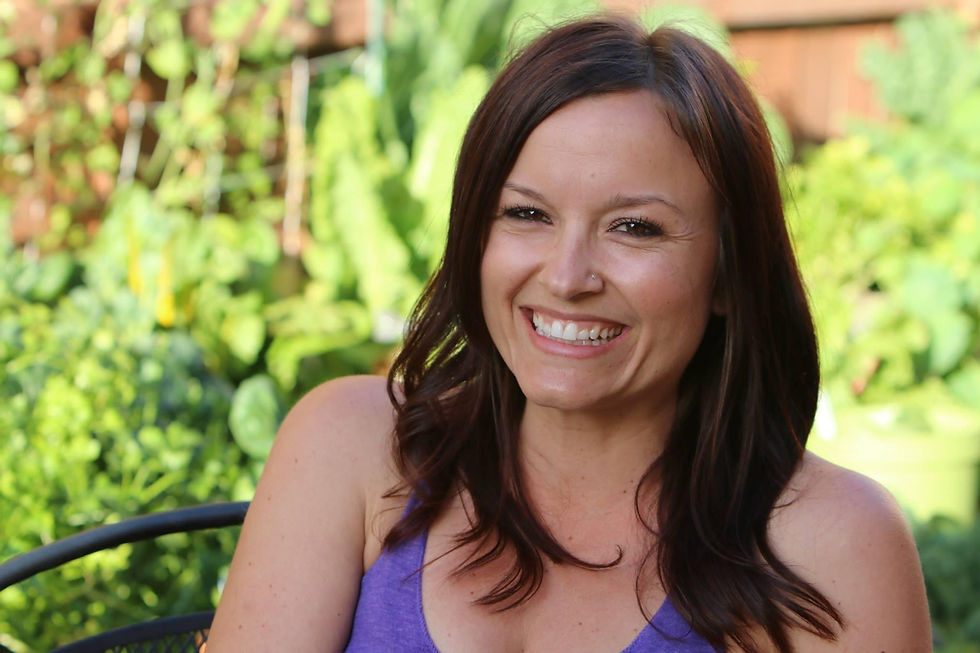GROW IN ABUNDANCE: Three Nutrient Rich Crops To Grow In Your Immunity Garden
- k-england
- Jan 1, 2022
- 3 min read
Updated: Feb 1, 2022
By Sommer Cartier, for Let's Talk Plants! January 2022.

The health benefits we receive from cultivating backyard gardens has never been more important than it is today. As we hit peak flu season, amidst growing concerns of more contagious Covid variants, people are prioritizing wellbeing and searching for ways to boost their immune systems. In considering the foods we eat and grow, it is important to include nutrient dense veggies that contain antiviral/antimicrobial properties and are loaded with vitamins and antioxidants that strengthen our immune system. Below are a few of those veggies to consider growing in your immunity gardens this year.
Garlic –

When I hear the phrase “food is medicine” garlic is the first thing that comes to mind. Garlic is a great prebiotic food - it fuels the good bacteria within your body, helping to keep the microbiome in your gut healthy. It also possesses antimicrobials which work against the spread of bacteria, viruses and other microorganisms. It is an impressive medical food.
Garlic is a relatively easy crop to grow. Once planted, it can be left to grow with very little fuss for 6-9 months. While it is best to plant garlic in the fall (October and November), in Southern California, we can plant it all season long. For best results, however, start your garlic during the cooler months. Plant your garlic 1 to 2 inches deep in well-draining soil, about 8 inches apart. Make sure the tip is pointing up. Garlic requires very little moisture and should be moderately watered during dry or hot spells. Garlic can be harvested when the bulb is completely filled out and plump (about 6-9 months). Be careful not to pull on the bulb. Instead, dig beneath and lift it with a small shovel.
Ginger –

Ginger is a wonderful anti-inflammatory and antioxidant crop. It also contains powerful antiviral and antibacterial properties, making it another impressive medical food.
Ginger grows well in pots and containers in humid subtropical conditions – making San Diego a great place to cultivate this powerhouse crop. When selecting a root to cultivate, make sure it’s firm and plump. Cut the ginger root into pieces containing eyes or buds and let them cure a day or two before planting in fertile warm soil (no less than 68 degrees). Unlike garlic, ginger requires plenty of moisture and good drainage. Ginger can be sensitive to cooler temperatures so it’s important to bring your plant inside during cold spells. When the leaves turn yellow, the plant is ready for harvest. You can either uproot the entire plant or dig down and break off pieces over time.
Spinach –

This cool-season leafy green is packed with vitamins C and K which are natural immune boosting vitamins. Spinach is also loaded with minerals, plant protein and flavonoids that act as antioxidants.
Plant seeds 1/2 to 1 inch deep in fertile, nutrient rich soil with 3 to 4 hours of direct sunlight a day. Make sure to water thoroughly, keeping the soil evenly moist. Once seedlings have grown their first set of true leaves, thin the plants to around 6 inches apart and continue to keep the soil evenly moist. Typically, you can harvest spinach four to six weeks after planting seeds. To maximize crop, use the "cut and come again" method to harvest the leaves. Trim off individual leaves with garden scissors, starting with the oldest outer leaves and letting the young inner younger leaves remain to continue growing.

With the gardening trend on the rise, and Covid cases growing once again, there seems to be a shift in the way we think about our food. “Victory Gardens” appear to be gaining popularity once again. However, today’s Victory Garden isn’t about combatting hunger, rather, it is focused on building immune systems. And, with a healthy immune system at the core, immunity-boosting crops have become the new “grow your own” that is bringing people back to the land.


Comments